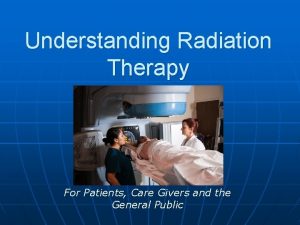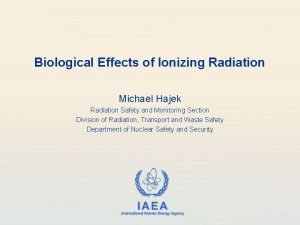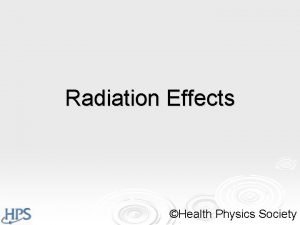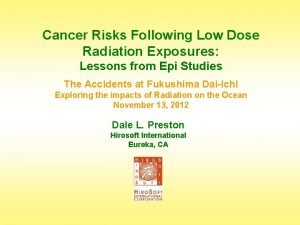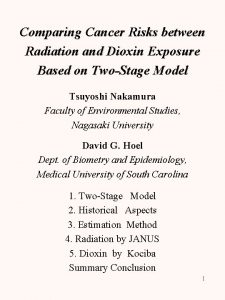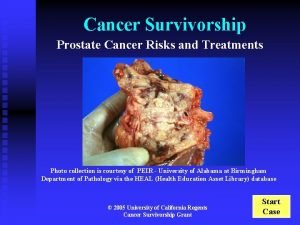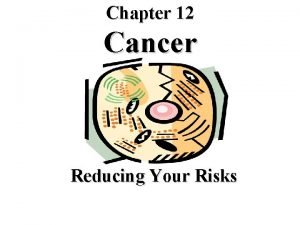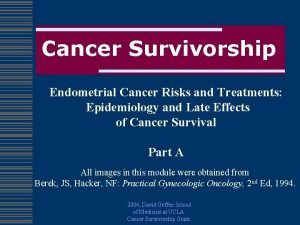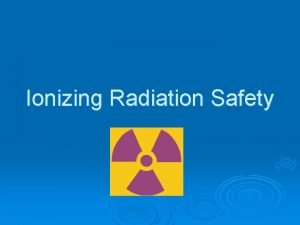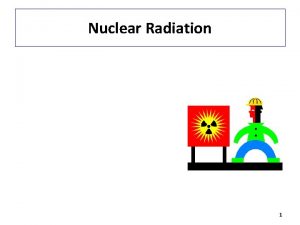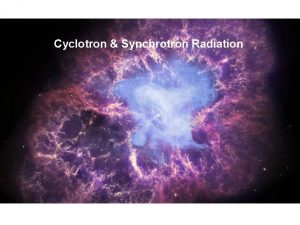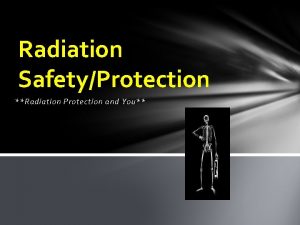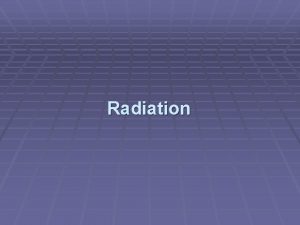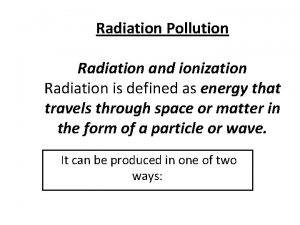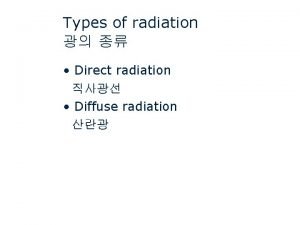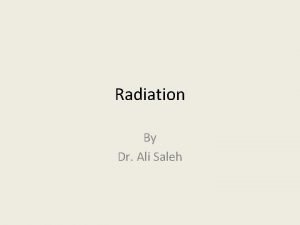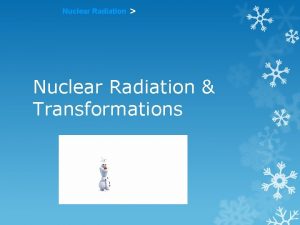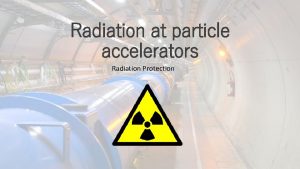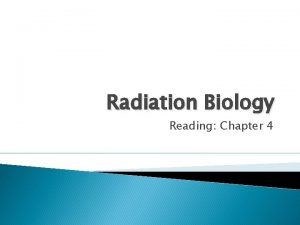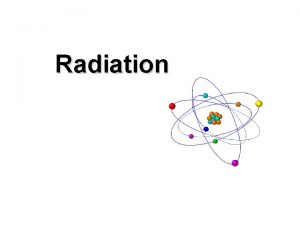Radiation Effects on Cancer Risks in the Techa





























- Slides: 29

Radiation Effects on Cancer Risks in the Techa River, Mayak Worker, Atomic Bomb Survivor Studies Applicability of Radiation-Response Models to Low Dose Protection Standards October 1, 2018 Dale L. Preston Hirosoft International

Topics • Background • Cohort comparisons Outline • Risk estimate comparisons • Conclusions

Mayak Production Association • Operations began in 1948 Mayak • Reactor complex (Re) • Radiochemical plant (RC) Production • Plutonium production (Pu) Association • Auxiliary facilities (Aux) • Occupational exposures • External gamma exposures • Film-badge measurements for workers in most years • Annual doses very high in first decade, declined over time • Internal exposure to Pu aerosols (RC & Pu) • Highest exposures in first decade • Urinalysis and autopsy measurements for ~40% of RC/Pu workers from 1970’s

Mayak Production Association Environmental Releases – Techa River • 115 PBq, between 1950 and 1956 • 95% 1949 -51 • 137 Cs, 89 Sr, 90 Sr most important isotopes • 41 affected villages along 240 km river • 21 of 24 villages within 140 km of source evacuated by late 1950’s

Mayak Production Association Environmental Releases – 1957 Accident • Storage tank explosion on September 29, 1957 • 80 PBq released • ~90% contaminated area near release • 8 PBq contaminated ~400 km 2 northeast of Mayak (East Urals Radioactive Trace - EURT) • 22 of 82 EURT villages were evacuated

Mayak Worker Cohort • 25, 757 workers initially employed between 1948 and 1982

Mayak Worker Cohort • 25, 757 workers initially employed between 1948 and 1982 • Highest annual doses in the first decade with rapid decline over time

Mayak Worker Cohort • 25, 757 workers initially employed between 1948 and 1982 • Highest annual doses in the first decade with rapid decline over time • Lifetime cumulative doses were quite high for early workers with much variability between plants

Mayak Worker Cohort Current Vital Status (through 2015) • • 25% of workers are women Mean age at initial exposure about 25 20% of cohort members lost due to migration 73% of men and 70% of women have died

Mayak Worker Cohort Doses • Median doses and dose rates are much lower

Techa River Cohort • 29, 710 riverside village residents • Born before 1950 • Resident at some time between 1. 1. 1950 and 12. 31. 1960 • 24, 710 original cohort members lived on Techa between 1950 and 1952 • 5, 004 late entrants first lived on Techa between 1953 and 1960 • 58% women • Women older than men due to impact of war and greater male mortality • Mean age at initial exposure: Men 25; Women 31 • 40% initially exposed as children

EURT Cohort • 19, 839 people • Born before accident • No Techa in-utero exposures • Resident in one of 33 EURT villages in Chelyabinsk Oblast between 28. 9. 1957 and 31. 12. 1959 • Includes 1, 598 people who are members of the TRC • 56% Women • Age at time of accident: • Men • Women 24 (40% < 20) 30 (30% < 20)

Techa / EURT cohorts Current Vital Status (2015)

Techa River / EURT Cohort Doses and Dose Rates • Median doses and dose rates are much lower

Atomic Bomb Survivor Life Span Study • 120, 321 residents of Hiroshima and Nagasaki • 93, 741 in the cities • 86, 720 with known dose • 26, 580 not in the cities • 58% women • Marked deficit of men between 18 and 40 • Mean age at exposure: • Men 24 • Women 27

Atomic Bomb Survivors Vital Status • 63% of men and 56% of women have died • Ages at death and cancer greater than in Mayak or Techa

Atomic Bomb Survivors Doses • Little difference between survivor colon and marrow doses • Survivor doses markedly lower than Mayak gamma doses • Survivor soft tissue doses higher than Techa doses, marrow doses roughly similar

Comparing LSS, Mayak, and Techa Risk Estimates • LSS risk models parameterized to reflect sex-ratios in Techa and Mayak cohorts and adjusted to reflect typical ages at exposure and ages at cancer death in Techa and Mayak cohorts • Techa: age at exposure 25 solid cancer death at age 65, leukemia death at age 50 • Mayak: age at exposure 25 solid cancer death at age 65 leukemia death at age 55 • Report risks as percentage increase in death rate at 100 m. Gy • Dose of interest for radiation protection • Avoids misleading comparisons for non-linear models

Comparing LSS and Mayak Cancer Risk Estimates * Mayak alpha-dose-associated lung cancer dose effect (% increase at 100 m. Gy): Men 28% Women 72% Plutonium exposure related deaths: 190

Comparing LSS and Techa + EURT Cancer Risk Estimates

Conclusions (1) • Mayak leukemia risks and external dose cancer risks appear to be somewhat lower than corresponding LSS-based estimates • Techa leukemia and solid cancer risk estimates appear to be similar to LSS risk estimates

Conclusions (2) • Cohorts differ with respect to nature of exposures and demographics so care must be taken to make appropriate comparisons • These comparisons do not address effect modification • Some suggestions of different attained age patterns in Techa than in the LSS • Power to detect external dose effect modification is low in Russian studies • Power to investigate site-specific risks is generally limited in the Russian studies.

Acknowledgments • Mikhail Sokolnikov, Nina Koshurnikova (SUBI) • Lyudmila Krestinina, Marina Degteva (URCRM) • Dan Stram (USC) • Bruce Napier (PNNL) • Barry Fountos (DOE-JCCRER) • Funding from US Department of Energy (JCCRER) and Federal Medical Biological Agency of the Russian Federation



Mayak Production Association Other Environmental Releases • Gaseous aerosols (131 -I) • 38 PBq from Mayak in the 1950 s • Affected Ozyorsk, Khysthm, Kasli and nearby villages • Karachai Pond 1967 • 20 PBq from resuspension of contaminated soil from Mayak waste storage pond

Techa and EURT cohorts Current Vital Status (2015)

Mayak Worker Cohort Current Vital Status (through 2015) • • 25% of workers are women Mean age at initial exposure about 25 20% of cohort members lost due to migration 73% of men and 70% of women have died

Comparing LSS and Mayak Cancer Risk Estimates * Mayak internal (plutonium) dose effect (% increase at 100 m. Gy): Men 28% Women 72% Plutonium exposure related deaths: 190
 Lifewave antenna
Lifewave antenna Centro techa
Centro techa Centro techa
Centro techa Cancer treatment
Cancer treatment Biological effects of radiation
Biological effects of radiation Radiation effects on chromosomes
Radiation effects on chromosomes Gấu đi như thế nào
Gấu đi như thế nào Thẻ vin
Thẻ vin Thứ tự các dấu thăng giáng ở hóa biểu
Thứ tự các dấu thăng giáng ở hóa biểu Thể thơ truyền thống
Thể thơ truyền thống Các châu lục và đại dương trên thế giới
Các châu lục và đại dương trên thế giới Từ ngữ thể hiện lòng nhân hậu
Từ ngữ thể hiện lòng nhân hậu Sự nuôi và dạy con của hổ
Sự nuôi và dạy con của hổ Thế nào là hệ số cao nhất
Thế nào là hệ số cao nhất Diễn thế sinh thái là
Diễn thế sinh thái là Vẽ hình chiếu vuông góc của vật thể sau
Vẽ hình chiếu vuông góc của vật thể sau Lp html
Lp html Làm thế nào để 102-1=99
Làm thế nào để 102-1=99 Lời thề hippocrates
Lời thề hippocrates Glasgow thang điểm
Glasgow thang điểm đại từ thay thế
đại từ thay thế Quá trình desamine hóa có thể tạo ra
Quá trình desamine hóa có thể tạo ra Công thức tiính động năng
Công thức tiính động năng Khi nào hổ con có thể sống độc lập
Khi nào hổ con có thể sống độc lập Thế nào là mạng điện lắp đặt kiểu nổi
Thế nào là mạng điện lắp đặt kiểu nổi Dot
Dot Vẽ hình chiếu đứng bằng cạnh của vật thể
Vẽ hình chiếu đứng bằng cạnh của vật thể Thế nào là sự mỏi cơ
Thế nào là sự mỏi cơ Bổ thể
Bổ thể Phản ứng thế ankan
Phản ứng thế ankan



